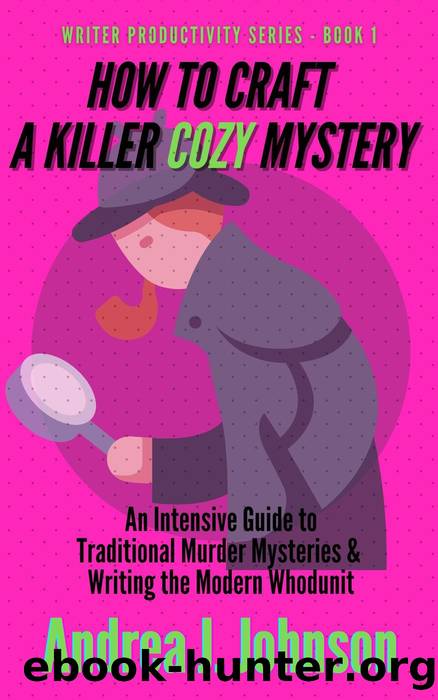How to Craft a Killer Cozy Mystery by Andrea Johnson

Author:Andrea Johnson
Language: eng
Format: epub
Tags: Authorship research publishing, Classic mystery detective literary criticism, Handbooks guides amateur sleuths fiction writing, Writing skill reference, Performing arts storytelling screenplays author success
Publisher: Andrea Johnson
Published: 2021-07-31T00:00:00+00:00
âIf a clue leads directly and unequivocally to the suspect, there is no room left for mystification.â ~ Marie F. Rodell,
Mystery Fiction: Theory & Technique (1943)
The key to clue placement lies in putting the clues in plain sight but in a manner that allows them to go unnoticed by the reader. This doesnât mean alter the truth or exaggerate portions of the intended idea. This is a matter of misdirection in the same manner used by magicians. Select what elements to show and which to conceal, then consider how those choices impact the sceneâs purpose and pace.
Below, I have listed several ways to insert clues into your dialogue, action, and overall storyline without making them obvious to the reader while still playing fair. These techniques will give your mystery a more organic feel and make the puzzle aspect of your narrative more fun.
⺠Expose one or two clues before the crime is committed so that the audience isnât 100 percent aware of their importance.
⺠Squeeze clues into petty arguments or place them in a line stated by minor characters.
⺠Introduce a factual statement during a funny moment. The humor will undo the gravitas of the clue, leaving room for the reader to overlook the importance.
⺠Place key information in the mouth of a child or a usually unreliable witness so that the audience overlooks the possibility at first glance. A great example of this can be found in Crooked House by Agatha Christie.
⺠Show the sleuth accusing the wrong character of the right crime or the right character of the wrong crime.
⺠Present clues out of order so that their collective meaning is more difficult to decipher.
⺠Deliver the clues through a character who is a braggart, gossip, or blabber mouth so that the clues become part of the constant chatter that person provides whenever they are on the page. Their words become so trivial that both the reader and the sleuth fail to pay full attention.
⺠Reveal a big flashy clue then place several smaller more powerful ones thereafter. The ah-ha moment of the big clue will overshadow the smaller ones or fool the reader into thinking they are less important.
⺠Break a big clue into several small parts and scatter those chunks throughout the story to make it difficult for the reader to grasp the full meaning of the clue. Many authors cut their star clue in half, giving one part of the reveal before the murder and the second half of the reveal after. Similarly, you can note a clue at the start of the novel and not have that idea become relevant until the murder. Any of these approaches can work for an issue youâd like to give a slow reveal.
⺠Let the absence of clues become a clue. This can include missing items or things the murderer stole from the scene as well as the failed execution of a common routine or pattern. For instance, the fact that the normally rowdy family pet didnât bark when the murderer entered suggests that the killer was someone familiar to the household.
Download
This site does not store any files on its server. We only index and link to content provided by other sites. Please contact the content providers to delete copyright contents if any and email us, we'll remove relevant links or contents immediately.
The Power of Myth by Joseph Campbell & Bill Moyers(1006)
Half Moon Bay by Jonathan Kellerman & Jesse Kellerman(953)
A Social History of the Media by Peter Burke & Peter Burke(936)
Inseparable by Emma Donoghue(926)
The Nets of Modernism: Henry James, Virginia Woolf, James Joyce, and Sigmund Freud by Maud Ellmann(834)
The Spike by Mark Humphries;(765)
The Complete Correspondence 1928-1940 by Theodor W. Adorno & Walter Benjamin(746)
A Theory of Narrative Drawing by Simon Grennan(742)
Culture by Terry Eagleton(717)
Ideology by Eagleton Terry;(696)
Bodies from the Library 3 by Tony Medawar(681)
World Philology by(675)
Farnsworth's Classical English Rhetoric by Ward Farnsworth(673)
Game of Thrones and Philosophy by William Irwin(669)
High Albania by M. Edith Durham(657)
Adam Smith by Jonathan Conlin(648)
A Reader’s Companion to J. D. Salinger’s The Catcher in the Rye by Peter Beidler(646)
Comic Genius: Portraits of Funny People by(616)
Monkey King by Wu Cheng'en(609)
